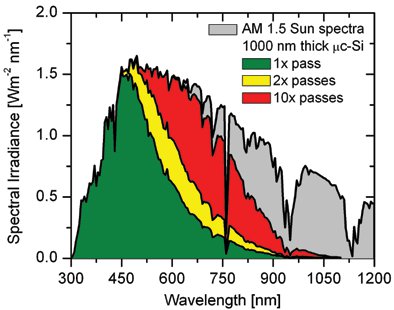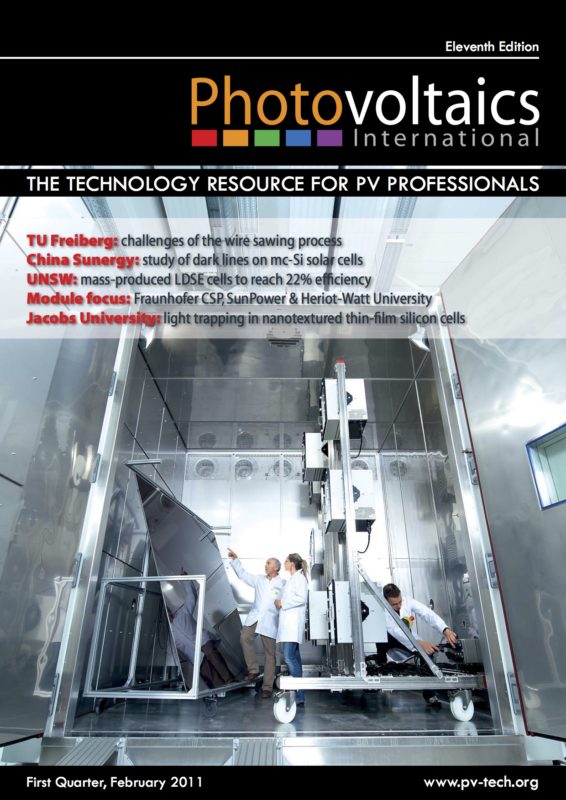By Rahul Dewan, Electronic Devices and Nanophotonics Laboratory, Jacobs University Bremen; Dietmar Knipp, Assistant Professor of Electrical Engineering, Jacobs University Bremen
Conversion efficiencies of thin-film silicon solar cells can be increased by nanotexturing of the cells. This nanotexturing step allows for a larger fraction of the incoming light to scatter and diffract, so that both the total absorption of light in the solar cell and the short circuit current is enhanced. In this study, we investigate the optics of thin-film silicon solar cells by numerically simulating Maxwell’s equations by a finite-difference time-domain algorithm. Starting with periodically textured solar cells, the influence of the texture period and height on the quantum efficiency and short circuit current were investigated. With this understanding of the optimized surface texture for periodically textured solar cells, the possibility of interpreting the optics of randomly textured solar cells will be discussed.



